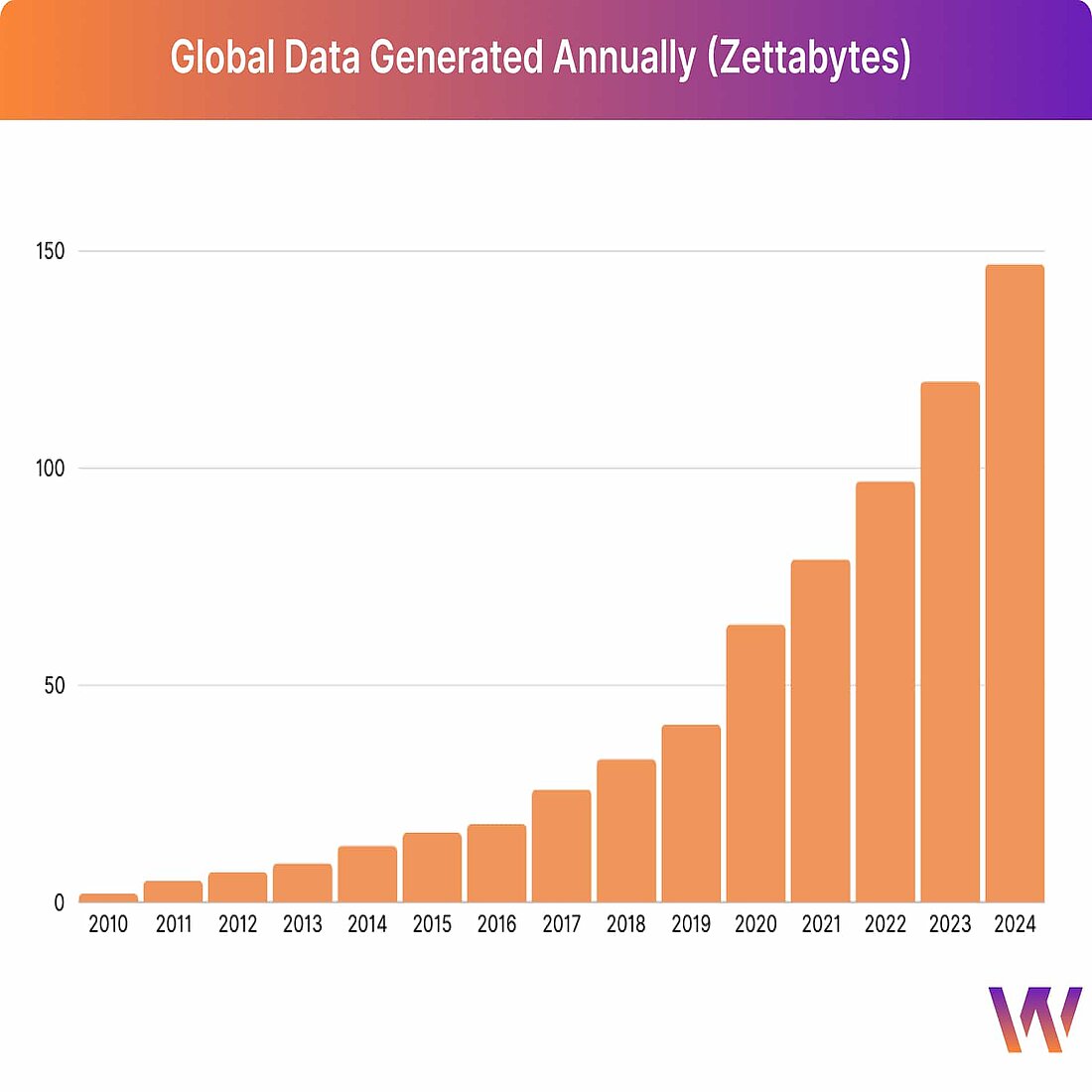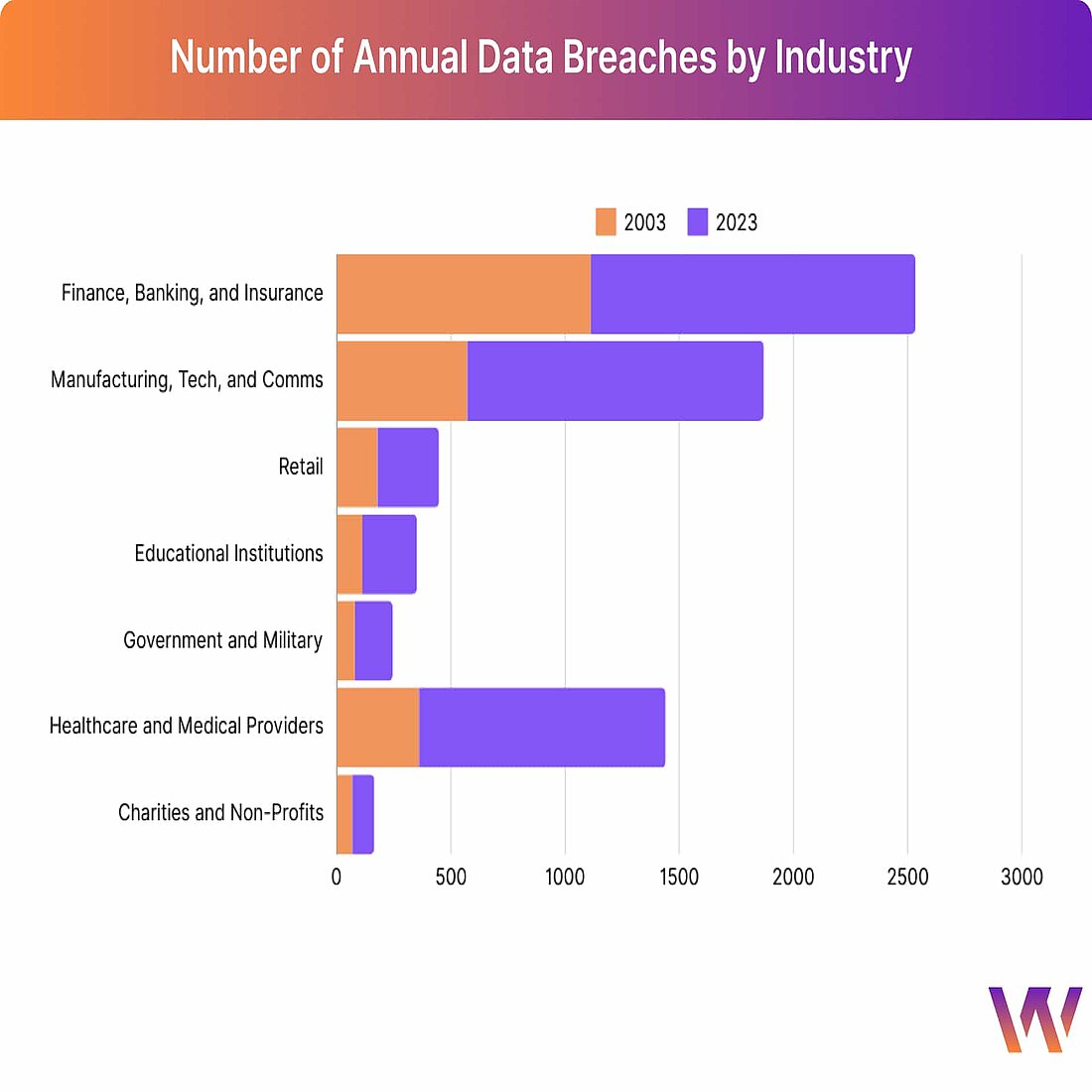- Why Us?
- Features
White Label
For SaaS Platforms & Agencies
Provide our complete analytics suite to your clients, directly within your own interface and with your/their own branding. Discover Analytics-as-a-Service and White Label Analytics. Great benefit, minimal effort.
- Pricing
- White Label
- Success Stories
- Partner
- ResourcesExpand Your Knowledge
CONTENTS
- What is Data Minimization?
- Why is Data Minimization Important?
- Key Principles of Data Minimization
- Data Minimization and Privacy Laws
- Data Minimization Under GDPR
- Data Minimization Under CCPA
- Data Minimization Under LGPD
- Data Minimization Use Cases
- Automated Data Collection Practices
- Handling Sensitive Data Categories
- Employee Monitoring
- Customer Relationship Management (CRM)
- IoT Device Management
- Maximizing Minimization with Data Products
- TWIPLA
- DataGrail
- Cookiebot
- FireHydrant
- CloverDX
Data Detox: Mastering the Principles of Data Minimization

Data minimization matters, and not just because this principle has been enshrined in over 120 state laws around the world.
Personal data is dangerous in the wrong hands. It opens people up to real risks that can destroy reputations and livelihoods, and this is reflected in KPMG findings that 68% of internet users are worried about the amount of data businesses collect on them.
If you’re looking to understand this subject, then this blog is a great jumping off point. In it, you’ll learn what data minimization is, why it’s so important to get right, and what businesses can do to achieve it. It also runs through some of the key global laws for reference, as well as some use cases and software to help you wrap your head around different data minimization techniques.
Let’s dive in!
What is Data Minimization?
Data minimization is a term that describes itself pretty well. It refers to the practice of limiting the collection, processing, and retention of customer data to what is strictly necessary for businesses to carry out their work.
But we’re living in the age of big data and businesses are collecting far more data than many probably realize. From social media activity and website browsing sessions to interactions with support teams, advertisements, and surveys, people now leave quite the data trail behind them.
In fact, according to Statista the average internet user creates 63,500 megabytes of data every day. This information is hoovered up by businesses as they interact with them and raises serious questions about the intertwined issues of data privacy and security, as well as regulatory compliance.
Enter data minimization, a process that enables businesses to work out what data they’re actually collecting through all their different online (and offline) channels. This minimization of implementation involves considering data minimization principles across every aspect of a business.
It means assessing what data they actually need to achieve a particular objective, and then putting processes in place to ensure that only this data is collected and processed. The goal here is ultimately to reduce and remove any data that isn’t useful by virtue of age, duplication, lack of value, and so forth.
Why is Data Minimization Important?
Data minimization is an essential legal obligation for businesses. It’s a key aspect of data privacy, as well as the requirements that have been codified into GDPR and many other global privacy laws, and you’ll find an overview of some of the main ones further down this article.
Companies that fail to comply with these regulations risk reputational damage and, in extreme cases, can be banned from operating online within certain geographic areas. There’s also the small matter of fines; for instance, what GDPR enforcers consider less severe infringement can result in a financial penalty of up to €10 million or 2% of a company’s global annual revenue from the previous financial year, whichever is higher.
These privacy regulations exist because data minimization is actually a social good. For reference, 39% of Americans would give up sex for a year if it meant they were never again at risk of being hacked, having their identity stolen, or online accounts breached. This is according to results from a survey by Harris Poll, and underlines the importance of limiting data storage as much as possible.
Data minimization is also therefore best practice that can help businesses to maintain customer trust by mitigating the risks associated with data storage and handling. Breaches happen and, if they do, adhering to data minimization principles work to reduce data theft by limiting the data that can be stolen.
It’s equally important to remember that the value of data to businesses decreases very quickly. People move house and migrate to another country. They change their names, get married, suffer divorce. As such, the information that businesses hold on their customers can quickly go out of date. Holding on to this personal data just in case is therefore pointless - and dangerous given the consequences outlined above.
Crucially, data minimization is also an effective way to improve data management and service delivery. It reduces the resources that businesses have to direct to responding to mandatory data requests. It makes it easier to find, correct, or delete data. It also increases the accuracy of user experience personalization, and ultimately makes businesses look better in the eyes of their customers.
Data storage is also expensive. Take research from Seagate, which found that UK businesses are spending an average of approximately $270,000 a year on data storage and information management. And from this perspective, data minimization is an effective cost-cutting strategy that frees up money that can be invested elsewhere. It makes businesses more sustainable by saving energy. It increases ESG ratings and makes organizations eligible for additional funding.
While many people believe that more data means more power, this isn’t actually true. Just as an army of 1,000 untrained and unarmed conscripts can be easily defeated by a small special forces unit, the true power of data comes from holding the right information and using it effectively.
Key Principles of Data Minimization

As previously mentioned, businesses can achieve data minimization by implementing procedures that cover the collection, processing, and retention of data. This can be done by adopting the 10 main data minimization privacy principles, which will ensure that data management practices are efficient, secure, and compliant with data protection regulations:
- Purpose Limitation: Data should be collected for explicit, specific, and legitimate purposes and not further processed in a manner that is incompatible with those purposes. For instance, businesses that collect email addresses for their newsletter mailing list should not include these subscribers in unsolicited marketing campaigns.
- Data Relevance: The data collected should be adequate, relevant, and limited to what is necessary in relation to the purpose for which it is processed. For instance, a job application form should only request information about a candidate’s suitability for the role and not ask for unrelated personal details.
- Data Accuracy: Any data on file should be accurate and, when necessary, kept up to date. This means that businesses should take every reasonable step to ensure that inaccuracies are deleted or rectified without delay. For instance, companies should regularly ask customers to update their contact details to avoid outdated or incorrect data usage.
- Storage Limitation: Data should only be stored for as long as it is necessary for the purpose that it was collected and processed for. For instance, businesses should delete or anonymize data after the related project is completed, or after a specified retention period.
- Access Restriction: Access to personal data should be restricted to employees who need it for legitimate business purposes. For instance, only HR should be able to access personal and sensitive employee information, rather than the entire organization.
- Anonymization and Pseudonymization: When possible, personal data should be anonymized or pseudonymized to protect the identity of the data subject. For instance, researchers should replace personal identifiers with pseudonyms or codes to protect the identities of participants.
- Data Security: Businesses should implement appropriate technical and organizational measures to ensure the level of security that is appropriate to the risk or sensitivity of information. For instance, sensitive personal information should be encrypted to prevent unauthorized access.
- Accountability: Businesses need to map out how data flows through their organization and any third party providers. This includes maintaining detailed records of data processing activities and conducting regular audits so that they can demonstrate compliance with data minimization principles.
- User Control and Transparency: Build capabilities for providing customers and other individuals with clear information about what data is collected, why it is collected, and how it will be used, and allowing them to control their own data. For instance, businesses should have easy-to-understand privacy policies and options for people to manage their data preferences and withdraw consent for processing activities.
- Regular Review and Adjustment: Continuously reviewing data collection practices and minimizing data collection to ensure only necessary data is collected. For instance, this means periodically assessing and adjusting data collection forms and processes to eliminate any non-essential data fields.
As you can see, there’s some unavoidable overlapping between these different principles. But by adhering to them as a whole, businesses will be able to effectively implement and manage their data minimization practices long into the future.
Data Minimization and Privacy Laws

The principles outlined above act to summarize the responsibilities that businesses have under data privacy laws, which can often be hard to penetrate on an individual basis.
It’s also important to remember that there are hundreds of data collection regulations around the world. Many of them are also extraterritorial in scope, so if a company is selling products to EU citizens, they have to comply with the EU’s data privacy framework regardless of whether they have a physical presence within this trading bloc.
However, these laws generally place similar restrictions on business practices around data, and many of them have been modeled on GDPR which explains why it’s the most talked about regulation. This section will therefore provide specifics about what this law actually says, as well as similar laws in California and Brazil:
Data Minimization Under GDPR
This law was introduced in 2018 and represents what many people see as the beginning of the modern data privacy era. Below you’ll find the regulations related to the GDPR data minimization requirements:
Article 5 of the GDPR covers the principles relating to the processing of personal data. Section 1(c) states that personal data shall be “adequate, relevant and limited to what is necessary in relation to the purposes for which they are processed (‘data minimisation’)”.
Article 25 of the GDPR lays out two further principles that relate to the collecting and storing of personal data, and specifically about data protection by design and by default. Data controllers should:
- “Implement appropriate technical and organizational measures, such as pseudonymisation, which are designed to implement data-protection principles, such as data minimisation, in an effective manner and to integrate the necessary safeguards into the processing in order to meet the requirements of this Regulation and protect the rights of data subjects.”
- “Implement appropriate technical and organizational measures for ensuring that, by default, only personal data which are necessary for each specific purpose of the processing are processed.
Data Minimization Under CCPA
The CCPA introduced the first data minimization requirements of any US privacy law and includes specific provisions on data minimization:
- Section 1798.100 of Civil Code § 1798.100 states that, "a business shall not collect additional categories of personal information or use personal information collected for additional purposes without providing the consumer with notice consistent with this section."
- Section 1798.105(d): of Civil Code § 1798.105 states that, "a business that receives a verifiable request from a consumer to delete the consumer's personal information pursuant to subdivision (a) shall delete the consumer's personal information from its records, notify any service providers or contractors to delete the consumer's personal information from their records, and notify all third parties to whom the business has sold or shared the personal information to delete the consumer's personal information, unless this proves impossible or involves disproportionate effort."
- Section 1798.120(c) of Civil Code § 1798.120 states that, "a business that collects personal information shall, at or before the point of collection, inform consumers as to the categories of personal information to be collected and the purposes for which the categories of personal information shall be used."
Data Minimization Under LGPD
The Brazilian General Data Protection Law (LGPD) includes several provisions related to data minimization. Here are the relevant sections:
- Article 6(III) states that data controllers need to ensure, "limitation of the processing activity to the minimum necessary to achieve its purposes, with coverage of the relevant, proportional, and non-excessive data in relation to the purposes of the data processing."
- Article 18(IV) states that data subjects have, “the right to anonymize, block, or delete unnecessary or excessive data or data not processed in compliance with the LGPD."
These provisions emphasize that personal data processing should be limited to what is necessary and proportionate to the intended purpose, and they grant individuals the right to request the anonymization, blocking, or deletion of excessive or improperly processed data.
Data Minimization Use Cases
If you managed to decipher the legalese covered above, then you’re doing better than most. However, one issue with laws generally is that they are not particularly useful when businesses are trying to work out what they actually need to do to meet their requirements. To help, you’ll find some real world data minimization scenarios below that you can use to guide your thinking:

Automated Data Collection Practices
Use Case: Website Analytics
Scenario: A company wants to analyze user behavior on its website.
Implementation: The analytics tool is configured to collect only anonymized, aggregated data such as page views and session durations without capturing personal identifiers like IP addresses or user IDs. This practice reduces the amount of personally identifiable information (PII) collected automatically.

Handling Sensitive Data Categories
Use Case: Medical Records Management
Scenario: A healthcare provider needs to manage patient medical records.
Implementation: Only the essential patient information required for a specific treatment is accessed by medical staff. Data unrelated to the current medical issue is kept restricted, ensuring only necessary information is used, thereby minimizing the exposure of sensitive data like full medical histories or genetic information.

Employee Monitoring
Use Case: Workplace Productivity Tools
Scenario: A company uses software to monitor employee productivity.
Implementation: The monitoring system is set to track only work-related activities and metrics, such as task completion rates and time spent on specific projects, without collecting personal communications or non-work-related activities. This approach ensures that only job performance data is collected, respecting employee privacy.

Customer Relationship Management (CRM)
Use Case: Targeted Marketing Campaigns
Scenario: A company wants to run a targeted marketing campaign.
Implementation: The CRM system collects only the necessary data points needed for the campaign, such as customer preferences and past purchase history, while excluding unnecessary personal details like full addresses or birth dates. This minimizes the amount of personal data handled.

IoT Device Management
Use Case: Smart Home Devices
Scenario: A company provides devices like thermostats and security cameras.
Implementation: The devices collect only the data necessary to function, such as temperature settings and motion detection alerts. They avoid storing continuous audio or video recordings unless explicitly required for specific security events, thus minimizing the data collected and stored.
Maximizing Minimization with Data Products
Data minimization may appear too complex for many businesses given the need to both organize so many different aspects holistically and have systems in place that enable them to prove their compliance on demand.
Thankfully, technology is on hand. Businesses can today leverage a wide range of data products strategically to streamline their data minimization efforts and meet data privacy requirements while still being able to maximize the potency of the data at their disposal. Below, you’ll find some examples:
TWIPLA
Privacy-Perfect Website Intelligence
TWIPLA is a website analytics solution that provides businesses with all the guidance they need to optimize their digital presence. It includes complete statistics on website performance as well as visitor behavior analytics and visitor communication tools that organizations can use to collect feedback from customers and do what they do better.
Crucially, it has been designed with privacy in mind. It comes out of the box compliant with all global laws and an advanced cookieless tracking system enables it to provide insights without collecting any personal data whatsoever. All data is also fully anonymized to ensure that the identity of website visitors is robustly protected. This privacy-by-design meets the principles of data minimization, and stops users having to worry about data collection, storage, and retention.
DataGrail
Privacy Management
DataGrail is a fantastic privacy management solution that businesses can use to monitor and streamline business-wide data management in one place. It provides all the tools that businesses need to ensure data minimization, including data mapping and inventorization, consent management, policy and notice management, and so on. Crucially, the software also has real-time dashboards and analytics that enable organizations to monitor their compliance with data minimization principles and identify areas of risk.
Cookiebot
Consent Management
Cookiebot is a great tool for managing the personal data that is collected through cookies and similar tracking technology. It includes tools such as a cookie banner generator, privacy policy generator, and an autotranslation tool. Crucially, it also automatically scans your website to provide data on any cookie usage by third-party integrations or other elements that you might otherwise miss. And, with a range of other data management features, it’s a great aid for businesses looking to streamline a key part of data minimization practices.
FireHydrant
Incident Response
FireHydrant is a great tool to have on board when a data breach or other incident happens. The software alerts users when a problem happens, and provides all the tools that businesses need to respond effectively. From automating toil to efficiently assembling the right teams, standardizing communications, facilitating better retrospectives, and gathering metrics, FireHydrant helps organizations improve their reliability and resilience. Crucially, it works to protect business data, and provides the monitoring and reporting tools that businesses need to meet data minimization principles.
CloverDX
Data Anonymization
CloverDX is a tool that can anonymize huge quantities of data. Users can customize the level of anonymization, and the resultant datasets are highly accurate. The platform can be used on-site or through a cloud network and it uses robust privacy techniques. Anonymization is a key principle of data minimization, and companies that need personal data to fulfill their objectives can use this tool to aid compliance with privacy requirements.
That’s Data Minimization Explained!
GDPR was the first law to introduce data minimization as a legal business requirement, and it’s been fascinating to see the impact of this law rippling out through copycat legislatures and business best practices over the best part of the last decade.
It’s definitely here to stay. Data privacy laws and enforcement agencies have also become ever more advanced as they adapt to growing data needs. GDPR has also driven the development of the emerging privacy-perfect technology market that enables businesses to capitalize on the data at their disposal without infringing on internet user data rights.
If you’re looking to join this migration, then you can start by selecting third-party website integrations based on their privacy compliance credentials. For analytics, consider TWIPLA.
We’re an advanced privacy-first website intelligence solution that is powered by an advanced cookieless tracking engine. This means that our platform provides the accurate insights into website performance and visitor behavior that businesses need for digital optimization without collecting any personal data.
TWIPLA has long been the top ranked analytics integration on Wix and is quietly guiding the success of over 1.5 million website owners around the world. Sign up today for free and see for yourself what our intelligence can do for your business.
Share article
Get Started for Free
Gain World-Class Insights & Offer Innovative Privacy & Security












